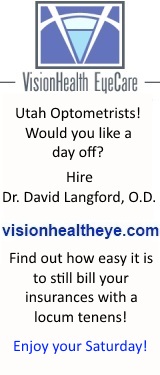The problem with current optometric software
I recently received in the mail a free audio CD from The Williams Group which goes over important features for optometric practice software. Of course, their product, Enterprise Solutions by OD Professional, has all of these. Actually, I was fairly impressed, and their software doesn’t have the silly restriction that MaximEyes has of an 800×600 pixel display.
On the whole, though, I feel that the EMR features of all current optometry software fall short.
My goal is to have a paperless office. How can I do that if my visual field machine tests and corneal topography maps aren’t automatically imported into the record? There is no software vendor on the market with the capability to import a Humphrey visual field into the EMR. This is my biggest beef. Why is it so hard for the software companies to import the hardware data? Proprietary interests I suppose. DVD, JPEG and other formats where defined by different companies in the industry coming together in a work group to sort out the details. Software vendors and ophthalmic instrument companies need to make standards for exporting data or at least an image of the reports. I would prefer data import to allow database searching and reports.
Also, I would expect from my practice software true website integration (while maintaining HIPAA compliance). The main website feature I would like is a contact lens re-order system that doesn’t require my staff to manually look up patient file to see if the CL Rx has expired. I definitely don’t want patients to schedule themselves online, but it would be nice to have them fill out patient information and history forms online (of course using encryption to be HIPAA compliant) that would automatically import into the software so my receptionist doesn’t have to type anything, just verify the information is correct when the patients comes in.
Also, the optometric software/hardware working group should come up with standards for optometric EMR database rules to allow easy conversion from one software suite to another. It would also allow an office to use (if desired) one brand of software for scheduling, one brand for EMR, and another for billing and financials. The standards group could also facilitate the format for ordering via web to any lab and billing to any insurance or clearing house.
Since Ziess Humphrey is the main perpetrator of not allowing data/report exportation, I suggest they become the leader in the proposed work group to devise these standards. Of course, Topcon, Marco, Tomey, Nidek, Optos, OD Professional, maximEyes, VersaSuite, RLIsys, and others should get involved as well.











